Homeowners often imagine their backyard as a serene retreat. The addition of a gazebo to this space seems like a perfect idea. It promises a shaded area for relaxation and social gatherings.
Yet, the concern arises — Will A Gazebo Kill My Lawn Grass? This article helps you understand various impacts a gazebo can have on lawn grass, offering insights and solutions.
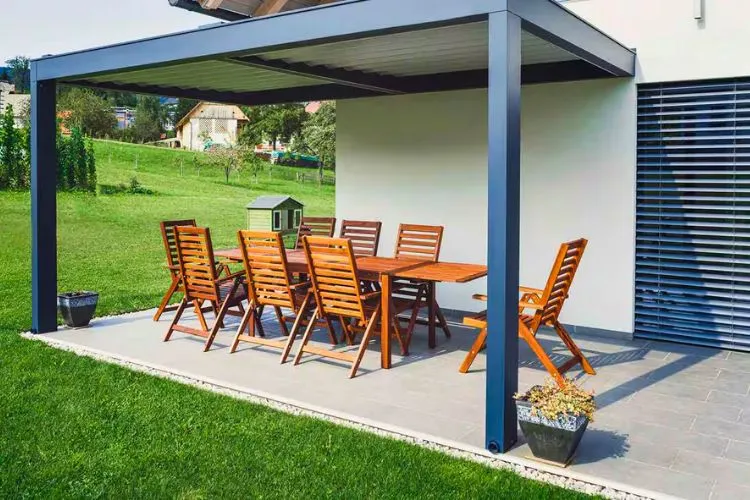
Contents
Will A Gazebo Kill My Lawn Grass?
Grass requires sunlight to thrive. The amount of light needed can vary among grass types. A gazebo will cast a shadow, reducing the sunlight available to the grass below. This can hinder its growth and affect its health over time.
Sunlight fuels photosynthesis, the process by which grass converts light into energy. With reduced light, the process slows down. The grass may grow thinner or become patchy in areas under prolonged shade.
However, some grass varieties cope better with less light. Researching and planting shade-tolerant grass types can be a good step.
Air Circulation and Moisture
A gazebo can also alter air flow and moisture levels. Air movement is crucial for drying dew and rainwater on grass blades. Restricted airflow under a gazebo might leave the grass damp for longer periods.
This can make the area prone to mold and mildew. It’s essential to consider the design and placement of your gazebo. Ensuring enough space for air to circulate can help mitigate these issues.
Potential Effects of a Gazebo on Lawn Grass
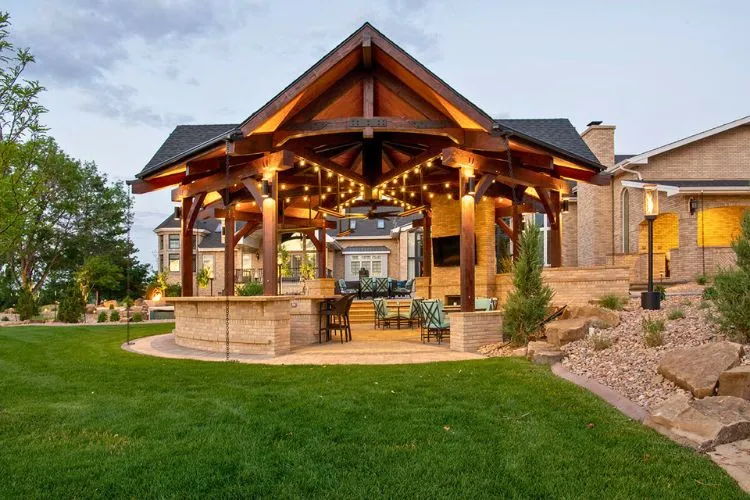
Grass Growth and Health
The health and growth rate of grass under a gazebo can decline. The reduction in sunlight and air circulation plays a significant role here. To combat this, homeowners can adjust their lawn care practices.
Watering less in shaded areas and applying fertilizer suited for shade can help maintain healthy grass. Regular aeration to improve soil conditions is also beneficial.
Weed Growth
Weeds often thrive in conditions where lawn grass struggles. The damp and shaded area under a gazebo can become a haven for weeds.
However, with careful monitoring and maintenance, it is possible to keep weeds at bay. Pre-emergent herbicides and hand weeding are effective methods for controlling weed growth in these conditions.
Disease and Pest Issues
Shaded, moist areas are attractive to some pests and can promote lawn diseases. It’s vital to stay vigilant.
Regular checks for signs of disease or pest infestation can catch problems early. Treating affected areas promptly with the appropriate products can prevent spreading.
Mitigating the Impact of a Gazebo on Lawn Grass
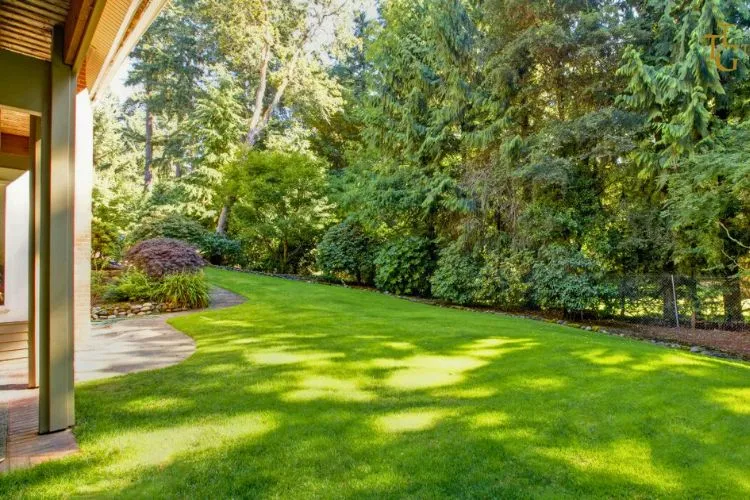
Proper Placement and Design
The impact on your lawn depends significantly on where and how you place your gazebo. Consider positioning it in a spot that receives ample sunlight at different times of the day.
This can help minimize the time any part of your lawn spends in shade. Opting for gazebos with open designs or those raised on legs can improve airflow, benefiting the grass underneath.
Lawn Care Practices
Adjust your lawn care routine to accommodate the gazebo. Mow the grass at a higher setting to allow blades to catch more light. Water these areas less frequently since the shade reduces evaporation.
Use fertilizers suited for shaded lawns to ensure the grass gets the nutrients it needs. These small adjustments can make a big difference in maintaining a healthy lawn.
You may also find useful: Can You Put a Gazebo on Artificial Grass?
Professional Advice and Services
There are situations where turning to professional landscape or lawn care services can be beneficial in integrating a gazebo into your outdoor space:
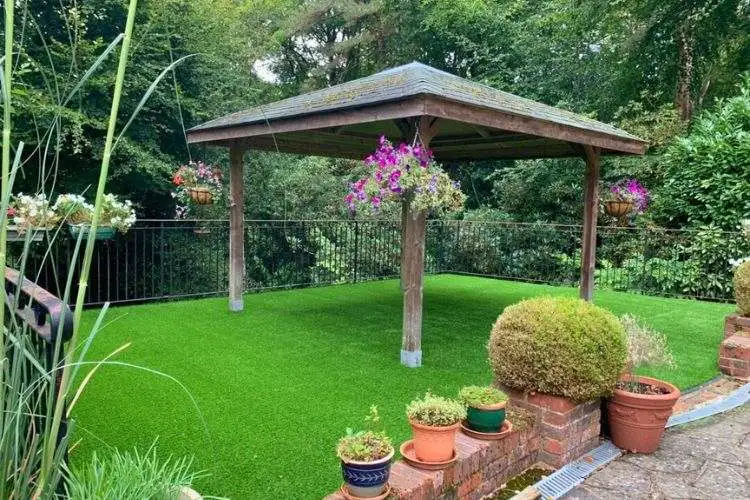
- Complex Landscapes: If your yard features steep slopes, significant levels of natural shade, or intricate landscaping designs, professional advice can prevent costly mistakes in gazebo placement and anchoring.
- Soil Analysis: Professionals can conduct a soil test to determine its type and condition. This is crucial for understanding how well it can support a gazebo and ensure proper lawn health around the anchoring points.
- Design Services: Landscape architects can create a cohesive design that incorporates a gazebo while maintaining the lawn’s health. They can suggest the best gazebo style, materials, and location that harmonize with your existing yard layout.
- Permit and Zoning Knowledge: For permanent gazebos, local zoning laws and building codes may require permits. Professionals can help navigate these regulations to ensure compliance.
- Specialist Installation: Proper installation is key to minimizing damage. Professional installers can ensure that your gazebo is securely anchored with the least amount of lawn disruption.
- Advice on Materials: Professionals can recommend the best materials for your gazebo that balance aesthetic appeal with practical considerations such as weight, light penetration, and airflow.
- Drainage Solutions: Experts can propose and install drainage systems to prevent water accumulation around the gazebo that could lead to grass damage.
- Seasonal Maintenance Plans: Lawn care professionals might offer maintenance plans tailored to keep the grass healthy despite reduced light and airflow underneath and around your gazebo.
- Restorative Services: If your lawn has already endured stress or damage, professionals can provide services like aeration, overseeding, and topdressing to restore it.
When to Seek Professional Help?
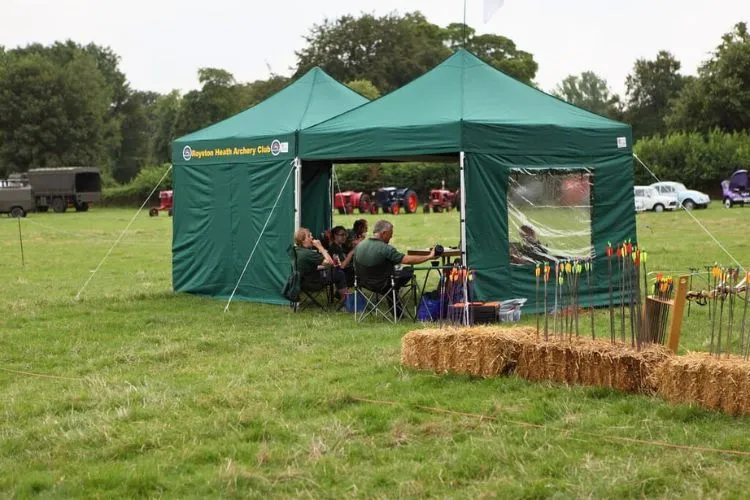
- Initial Planning Stage: Before purchasing and installing a gazebo, obtaining professional advice helps you select the right option for your space and avoid long-term lawn damage.
- Visible Lawn Damage: If your grass begins to show signs of distress such as yellowing, bare patches, or poor growth, consult a professional to address the issues promptly and effectively.
- Preparing for Seasonal Changes: Professionals can advise on the best lawn care practices as you transition between seasons, keeping your lawn robust year-round.
- When Time or Expertise is Lacking: If you don’t have the time, tools, or confidence to properly care for your lawn around your gazebo, a lawn care service can take the burden off your shoulders.
Consulting professionals can not only ensure a beautiful and secure addition to your garden but also help maintain the vitality of your lawn so that it enhances your outdoor living space alongside your new gazebo.
Frequently Asked Questions (FAQs)
Can I move my gazebo to different locations to benefit the grass?
Yes, if your gazebo is portable, rotating its location can prevent prolonged shadowing of any grass area. This ensures all parts of your lawn receive adequate sunlight over time.
Are some grass types more resistant to shade?
Yes, some grass varieties, like Fine Fescue and St. Augustine, are more shade-tolerant. They are better suited for areas under gazebos.
How often should I check for lawn diseases under my gazebo?
It’s wise to inspect your lawn monthly, especially in warm, damp conditions when disease spread is more likely.
Conclusion:
While a gazebo can impact lawn grass, proper planning and care can mitigate these effects. By understanding the challenges and adjusting lawn care practices, you can enjoy the beauty and utility of a gazebo without sacrificing the health of your lawn.
Keep the lawn ventilated, choose the right grass type, and maintain a tailored care routine. With these steps, your lawn can remain lush and vibrant, even with a gazebo as its centerpiece.

Sergio Gomes, a passionate advocate for outdoor living and the male voice behind Shades Authority. With years of experience, Sergio is your trusted source for expert insights on gazebos, pavilions, cabanas, pergolas, and all things outdoor shade solutions. Join him on a journey to transform your outdoor spaces into stunning, functional retreats
